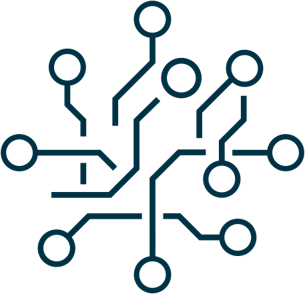What challenges do companies face in their AI projects?
In client projects, we see three main areas that are slowing down the introduction of AI:
1. Compliance, data protection, and security: AI systems often use sensitive, personal or business-critical data. They must therefore meet regulatory requirements, particularly with regard to data protection, quality, traceability, and fairness.
2. Strategy and business value: Very often, AI services are not clearly embedded in the overarching corporate strategy. This means that there is no clear objective. In addition, companies find it difficult to measure the specific added value of their AI services.
3. Organization and change management: The introduction of AI solutions means that processes, roles, and working methods change. Companies often underestimate the extent of these changes.
How can these obstacles be overcome?
When it comes to compliance, data protection, and security, it depends heavily on the use case, the company, and the industry. It is important to consider the requirements that can be solved technically or organizationally from the outset. We therefore recommend not planning a pilot project as a purely technical PoC, but transfer it to the productive environment at an early stage. This forces compliance, data protection, and security issues to be considered from the start – instead of integrating them at the scaling stage.
When it comes to strategy and business value, we recommend using the corporate strategy as a compass and consistently considering how AI can support the strategic goals. We then evaluate the identified use cases based on three dimensions: strategic relevance, business value based on the business case, and feasibility. The use cases are prioritized, orchestrated according to a roadmap, and implemented. They are continuously measured against the KPIs and adjusted if necessary.
And finally, as regards organization and change management, as with any IT project, all persons affected should be involved – from the decision-makers to those responsible for operations to the end users. The next step is to anticipate and monitor the effects on processes, organization, and user behavior. Adjustments often have to be made during the test and introduction phase. This is because new AI solutions tend to lead to unforeseeable changes in behavior. One thing is certain: the better the needs of those affected are recognized and met, the greater their acceptance.
You advocate a holistic approach. How do you deal with the risk of slowing down projects as a result?
The risk does indeed exist. However, it is unrealistic or even counterproductive to wait for all issues to be fully clarified in advance. The introduction of AI is an iterative journey on which employees and the company learn and grow together.
A step-by-step approach makes perfect sense – provided it is embedded in a clear overall strategy based on the «think big, start small» principle.
In order to minimize risks and at the same time enable the necessary learning process, you should initially focus on a small but representative part of the use case and the user group in a pilot, which is a central phase. A good example of this is a project at a Swiss insurance company. There, a self-service voicebot was initially only activated for around 1 percent of the daily call volume. On this basis, the service was gradually developed further and expanded in terms of both functionality and reach.
More details on which key criteria help make AI services a business success can be found in this article by Stéphane Mingot.
This interview was first published in the AI Special of Netzwoche in August 2025.





